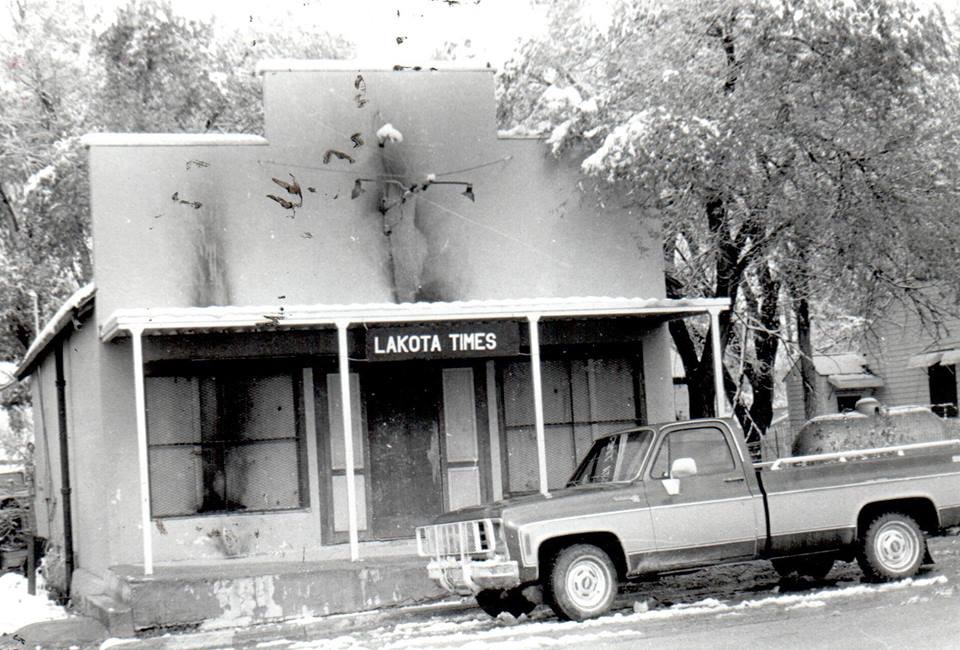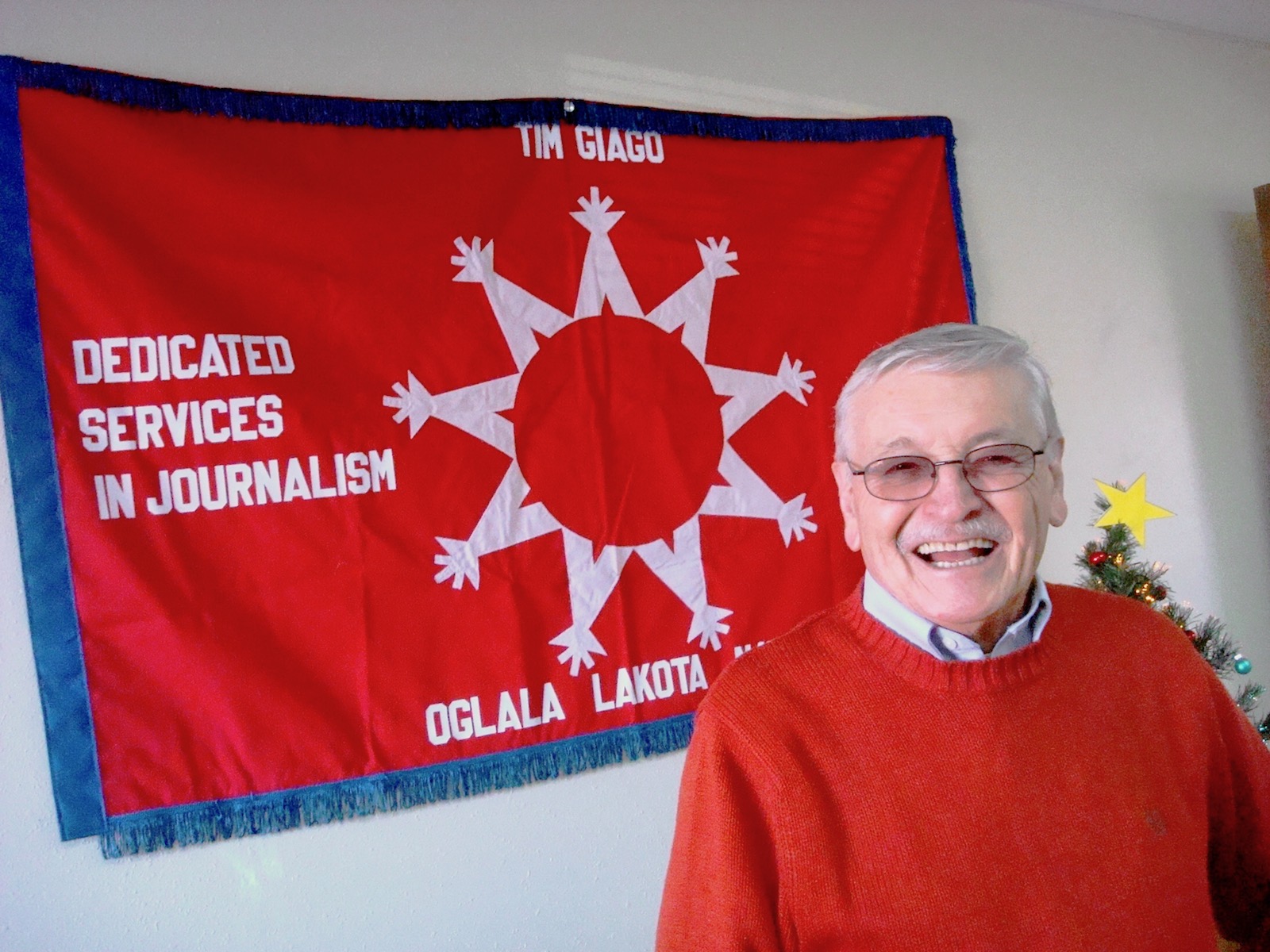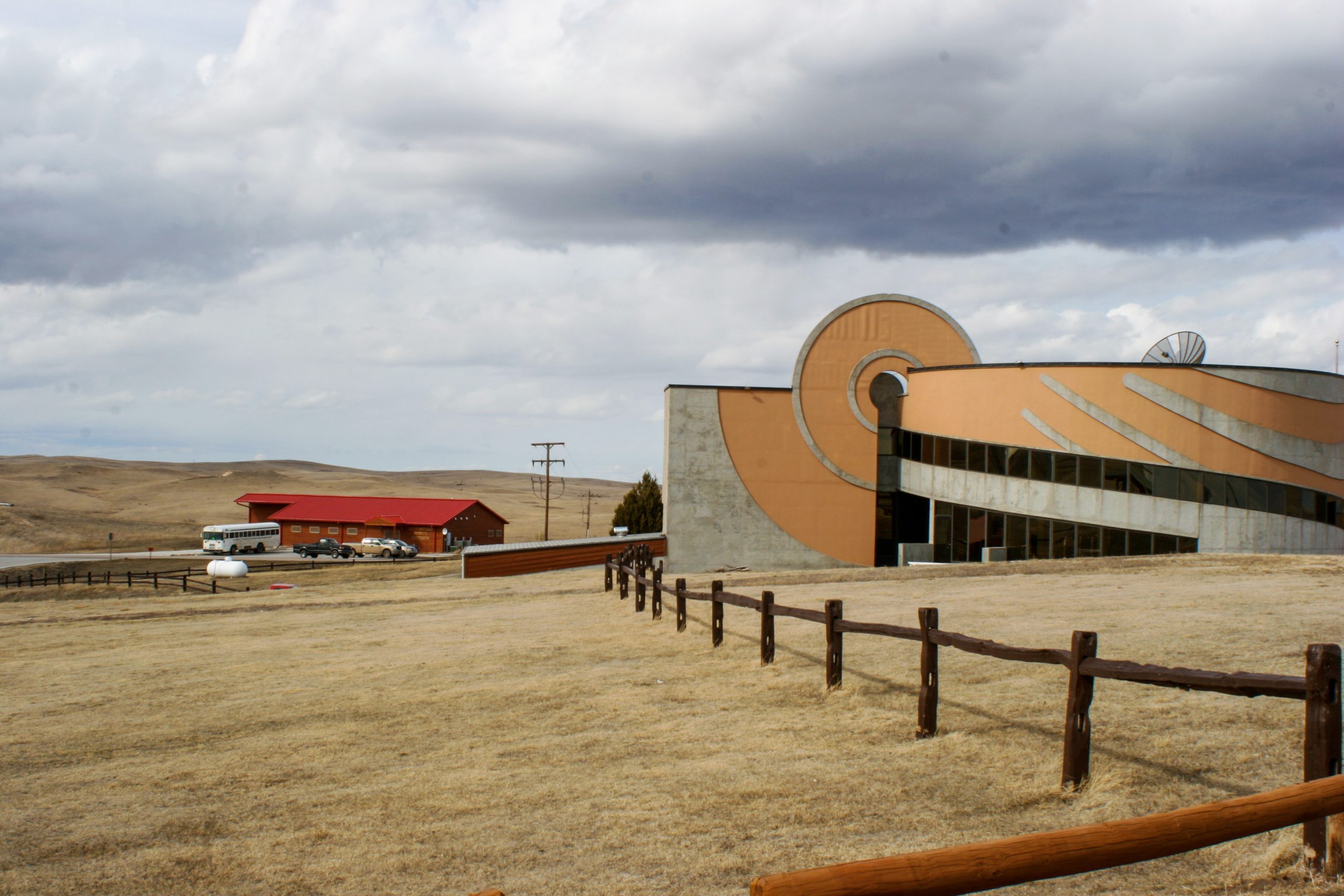Indianz.Com > News > Tim Giago: The aftermath of the occupation at Wounded Knee

The aftermath of Wounded Knee
Wednesday, January 12, 2022
The television cameras were all packed away and stuffed into the trunks of the rental cars. Notebooks were crammed into briefcases and alongside of the cameras, packed in rental cars headed for Rapid City. The violent takeover of Wounded Knee began on February 27, 1973.
New York Times journalist Bill Kovach, covering the Wounded Knee takeover, made the in-house news of the Times when his Hertz Rental car, parked at Wounded Knee, was stripped of everything strippable and left on blocks on the outskirts of the village. The Times in- house story about the perils of Kovach was titled, “Bury My Hertz at Wounded Knee.”
All of the journalists from places far away from Wounded Knee wrongfully assumed that since the occupiers decided to abandon Wounded Knee the story was ended. They weren’t there to watch the occupiers file out of Wounded Knee in a line of cars only to be stopped and searched by the U.S. Marshals. The Marshals confiscated all of the loot and stolen works of art that the occupiers had squirreled away in their cars hoping to make a quick profit on them.
They recovered priceless works of art by such great Lakota artists as Andrew Standing Soldier, Felix Walks Under the Ground, Richard Red Owl and Hobart Keith. All in all they confiscated 42 works of art from the occupiers.



Tim Giago is the Publisher of Native Sun News Today. He was a Nieman Fellow at Harvard with the Class of 1991 and the recipient of many journalism awards including the H. L. Mencken Award. He can be reached at najournalist1@gmail.com
Note: Content © Tim Giago
Search
Filed Under
Tags
More Headlines
Native America Calling: Tribes forced to find new clean energy paths
Cronkite News: Republicans push ‘One Big Beautiful Bill’ through Congress
Native America Calling: Residents brace for Medicaid and food assistance cuts
NAFOA: 5 Things You Need to Know this Week (July 7, 2025)
Native America Calling: A kids-eye view of the importance of relatives
Native America Calling: Confusion reigns with American Samoa citizenship status
Native America Calling: A personal portrait and a summer blockbuster
Source New Mexico: Tribes demand protections for sacred lands
Arizona Mirror: Fire prompts evacuations on Navajo Nation
Cronkite News: Congress poised to reauthorize radiation compensation program
Native America Calling: The new limits on challenging federal actions
VIDEO: ‘We have a lot of support throughout Indian Country’
Native America Calling: The necessary, but imperfect reality of the Indian Health Service
Cronkite News: President Trump claims victory in birthright citizenship case
Tom Cole: The cost of American independence
More Headlines
Cronkite News: Republicans push ‘One Big Beautiful Bill’ through Congress
Native America Calling: Residents brace for Medicaid and food assistance cuts
NAFOA: 5 Things You Need to Know this Week (July 7, 2025)
Native America Calling: A kids-eye view of the importance of relatives
Native America Calling: Confusion reigns with American Samoa citizenship status
Native America Calling: A personal portrait and a summer blockbuster
Source New Mexico: Tribes demand protections for sacred lands
Arizona Mirror: Fire prompts evacuations on Navajo Nation
Cronkite News: Congress poised to reauthorize radiation compensation program
Native America Calling: The new limits on challenging federal actions
VIDEO: ‘We have a lot of support throughout Indian Country’
Native America Calling: The necessary, but imperfect reality of the Indian Health Service
Cronkite News: President Trump claims victory in birthright citizenship case
Tom Cole: The cost of American independence
More Headlines